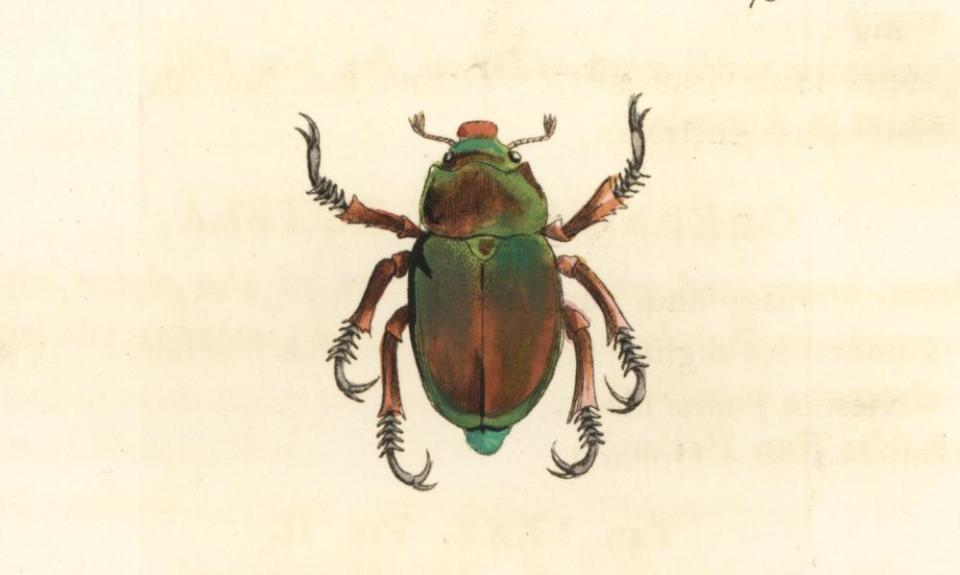A Christmas beetle: in England they’re called ‘cockchafers’

If you hold a Christmas beetle – small, brown, mechanical – in the palm of your hand, it moves as though under a spell. The spell commands it to keep walking, to burrow its surprisingly strong legs endlessly forwards, like the end of the year growing steadily nearer and just as steadily receding.
In Europe, Christmas beetles are called “cockchafers”. In the year 1478, they appeared in a French court to stand trial on the charge of having been sent by witches to destroy the laity’s crops (and jeopardise the church’s tithes).
The judge, addressing the beetle as “Thou irrational and imperfect creature”, writes EP Evans in the Criminal Prosecution and Capital Punishment of Animals, found them guilty and banished them. Were the beetles to “think you have some reason for not complying”, they were to re-appear six days later at precisely one o’clock, “to justify yourselves or to answer for your conduct”.
Related: The humming of Christmas beetles was once a sign of the season. Where have they gone? | Jeff Sparrow
In 1479, the cockchafers were accused of “creeping secretly in the earth”. Again the court ordered them “banned and exorcised”, adding that they, “through the power of Almighty God shall be called accursed and shall daily decrease whithersoever you may go”.
Centuries passed and lo, the satanic scarabs persist. In Australia and South Africa, they have reinvented themselves as Christmas beetles. They herald summer and the end of the year; they are the people’s beetle. (Back in the northern hemisphere, their name proves harder to shake: “Look here, you old cockchafer, what makes you think you can run a history department, even at a place like this, eh, you old cockchafer?,” asks our hero Jim Dixon in Lucky Jim).
In 2017, on a South African breakfast show called Expresso, the hosts are talking about Christmas beetles: “Agh they’re so small man, come on,” says one.
The guest entomologist is asked whether Christmas beetles are considered pests. They are not, he says, and besides, “I hate it when people just see bugs and want to kill them”.
“Yeah man,” says one of the hosts, before our learned friend continues, “If you really want to kill them, get a bucket of water, put a drop of washing up liquid in there and just throw them in there, let them drown”. (At the end we discover that he is “actually a big fan of ants”).
In 2019, a woman in Australia looks up Christmas beetles on YouTube and finds the episode. She watches, then posts a comment: “I found one tonight I’m in Australia. The fire’s are terrible”.
It is December 2021 and the theme of my eight-week-old daughter’s days is “hands”. She chews on her little fist, she grasps and ungrasps my index finger, she stares, alarmed, at the ends of her unsteady arms.
I imagine her – a future daughter, one I have yet to meet – in Sydney, where we live, or Johannesburg, where I am from, enclosing a small brown insect gently in her hand. In the dark the beetle moves under its spell, compelling her forward in time.
Helen Sullivan’s Calcium-Magnesium, a collection of essays about science and the natural world, will be published in 2023.

 Yahoo Finance
Yahoo Finance 